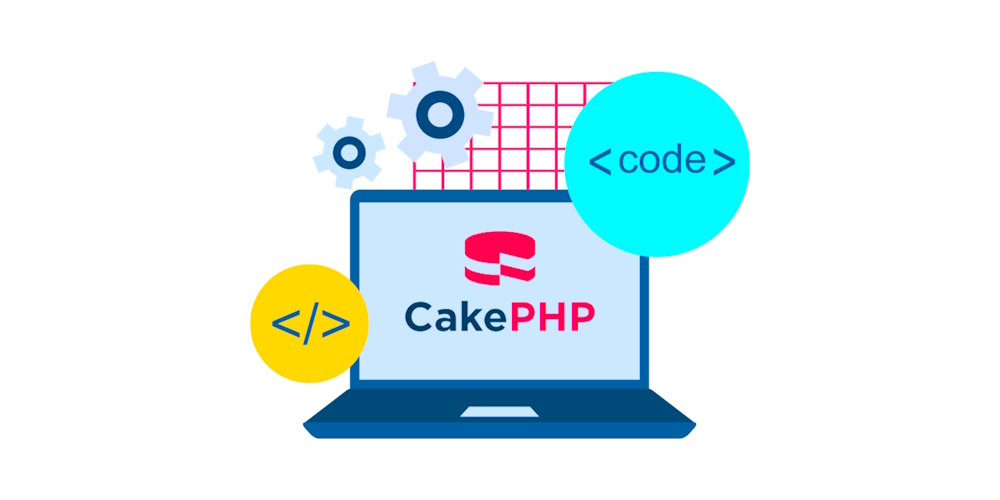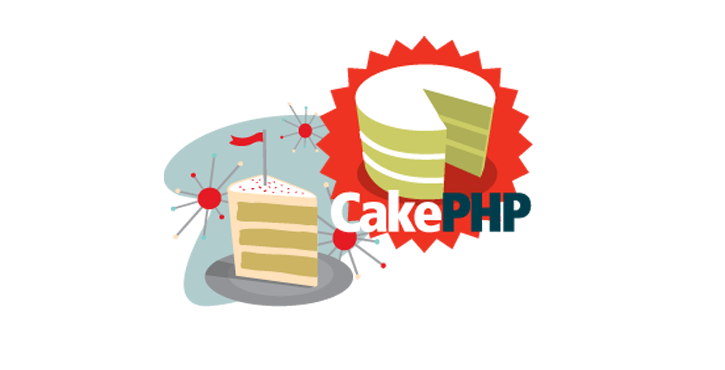Understanding CakePHP Development
CakePHP’s core features include built-in ORM (Object-Relational Mapping) for database interactions, scaffolding for rapid prototyping, and powerful validation features. These tools streamline development workflows and enable developers to focus on business logic rather than infrastructure setup.
- MVC Architecture
- Batteries-Included Approach
- Flexible Templating
- Scaffolding
- Security Features
Dlite Info Tech
Why CakePHP Development is Crucial for Modern Web Applications

Why CakePHP Development is Crucial for Modern Web Applications
Code organisation and maintenance are made easier by CakePHP’s adherence to the MVC (Model-View-Controller) architectural pattern, which guarantees the separation of concerns. By prioritising conventions over configuration, this framework eliminates tedious setup chores and frees up developers to concentrate more on business logic, resulting in faster development.
Dlite Info Tech Craft Beautiful Websites That Attract And Convert!
We excel in crafting compelling websites that not only capture attention but also yield outcomes. With a team of proficient designers and developers, we’re committed to elevating your online presence into a stunning showcase. We grasp the significance of crafting not only aesthetically pleasing but also practical websites that captivate and convert visitors into devoted patrons.

what you get
Key Benefits of CakePHP Development
CakePHP’s combination of structured development practices, powerful features, and community support makes it an ideal framework for developers looking to build scalable, secure, and maintainable web applications effectively.
Rapid Development
Scaffolding: CakePHP provides scaffolding features that automate the generation of basic CRUD (Create, Read, Update, Delete) functionality for database tables. Developers can quickly create and test application prototypes without writing extensive boilerplate code, accelerating the initial development phase.
Code Generation: CakePHP’s command-line interface (CLI) tool, CakePHP Console (also known as CakePHP Bake), facilitates rapid development by generating code snippets, controllers, models, and views based on predefined templates. This tool automates repetitive tasks and helps developers adhere to CakePHP conventions, reducing development time and effort.
Flexible Templating: CakePHP’s flexible templating system allows developers to create reusable view elements and layouts, enhancing code reusability and consistency in UI design. By leveraging helpers and components, developers can streamline the development of dynamic and responsive user interfaces.
Built-in Features and Extensions: CakePHP comes with built-in features such as authentication, caching, validation, and session management. Additionally, developers can extend CakePHP’s functionality by integrating plugins and extensions from the CakePHP ecosystem. These built-in features and extensions enable developers to add advanced functionalities to their applications quickly and efficiently.
Powerful ORM (Object-Relational Mapping)
Database Abstraction Layer: CakePHP’s ORM provides a powerful database abstraction layer that allows developers to interact with databases using PHP objects and methods. This abstraction simplifies database operations by eliminating the need for direct SQL queries, making code more readable and maintainable.
Model-Driven Development: CakePHP’s ORM follows the active record pattern, where database tables are represented as PHP classes (Models). Developers can define relationships between models (e.g., one-to-one, one-to-many) using associations, simplifying complex data retrieval and manipulation tasks.
Automatic Query Generation: CakePHP’s ORM automatically generates SQL queries based on method calls and associations defined in models. This automatic query generation reduces the amount of boilerplate code developers need to write, speeding up development and minimizing errors.
Data Validation and Callbacks: CakePHP’s ORM includes built-in data validation features and callbacks that allow developers to validate and manipulate data before it is saved to the database. Validation rules can be defined within model classes, ensuring data integrity and consistency across the application.
Built-in Security Features
Cross-Site Scripting (XSS) Protection: CakePHP includes mechanisms to mitigate XSS attacks by automatically escaping output in views. This prevents malicious scripts from being injected into the rendered HTML, thereby enhancing the security of the application.
Cross-Site Request Forgery (CSRF) Protection: CakePHP provides built-in CSRF protection by generating and validating tokens for forms and requests. This feature helps prevent unauthorized actions initiated by forged requests, ensuring the integrity and security of user data and actions.
SQL Injection Prevention: CakePHP’s ORM (Object-Relational Mapping) and query builder utilize prepared statements and parameterized queries by default. This practice mitigates the risk of SQL injection attacks, where malicious SQL commands are inserted into query strings to manipulate databases.
Authentication and Authorization: CakePHP offers robust authentication and authorization mechanisms out-of-the-box. Developers can easily implement user authentication, manage user roles and permissions, and enforce access control rules. These features ensure that only authorized users can access sensitive data and perform specific actions within the application.
Community and Ecosystem
Active Community Engagement: CakePHP benefits from an active and supportive community of developers and enthusiasts. Community members contribute to forums, participate in discussions, and share knowledge through blogs, tutorials, and social media platforms. This engagement fosters collaboration, problem-solving, and continuous improvement of the framework.
Extensive Documentation: CakePHP maintains comprehensive documentation that serves as a valuable resource for developers at all skill levels. The documentation covers installation instructions, framework features, best practices, and advanced topics, empowering developers to leverage CakePHP effectively in their projects.
Plugins and Extensions: The CakePHP ecosystem includes a wide range of plugins and extensions developed by the community. These plugins extend CakePHP’s core functionality, offering solutions for tasks such as authentication, caching, integration with third-party services, and more. Developers can easily integrate plugins into their applications to enhance functionality and accelerate development.
Supportive Learning Resources: In addition to documentation and plugins, the CakePHP ecosystem provides learning resources such as tutorials, video courses, and workshops. These resources help developers learn CakePHP fundamentals, explore advanced techniques, and stay updated with the latest features and practices in web development.
Flexible Templating
Support for Multiple Templating Engines: CakePHP supports various templating engines such as PHP itself, as well as popular third-party engines like Twig. This flexibility allows developers to choose the templating engine that best suits their preferences and project requirements.
Reusable View Elements: CakePHP’s templating system enables developers to create reusable view elements, also known as partials or components. These view elements can encapsulate common UI elements, such as headers, footers, navigation bars, or widgets, promoting code reusability and consistency across the application.
Layouts and Master Templates: CakePHP allows developers to define layout files or master templates that serve as the skeleton structure for multiple pages within the application. Layouts typically contain common HTML structure, headers, footers, and placeholders for dynamically rendered content from views.
Helper Functions and Components: CakePHP provides helper functions and components that simplify common tasks within views. Helpers facilitate form creation, HTML generation, URL handling, and more, reducing the amount of code developers need to write manually and promoting efficient development practices.
MVC Architecture
Separation of Concerns: MVC architecture separates the application into three interconnected components:
- Model: Represents data and business logic. It interacts with the database, performs data manipulation, and implements business rules.
- View: Handles the presentation layer, displaying data to users and collecting user inputs. Views are typically HTML templates with embedded PHP or other templating language.
- Controller: Acts as an intermediary between the Model and View. It receives user inputs, processes requests, interacts with the Model to retrieve data, and then passes that data to the View for presentation.
Modular Development: MVC promotes modular development by dividing responsibilities into distinct components. This separation allows developers to focus on individual components without affecting others, enhancing code organization, reusability, and maintainability.
Flexibility and Scalability: MVC architecture provides flexibility to modify or replace any component (Model, View, or Controller) independently without affecting the rest of the application. This flexibility supports scalability as applications grow in size and complexity.
Enhanced Collaboration: MVC architecture facilitates collaboration among developers and designers. Developers can work on business logic (Model and Controller) independently from UI/UX designers who focus on creating and refining the user interface (View). This separation of concerns streamlines development workflows and improves team productivity.
Creating Success
Why CakePHP Development Services Excel in Today's Market
Robust MVC Architecture
CakePHP's adherence to the MVC (Model-View-Controller) architectural pattern enhances code organization and maintainability.
Efficient Rapid Prototyping
CakePHP's scaffolding capabilities and code generation tools expedite the development process.
Built-in Security Features
CakePHP offers built-in security measures such as XSS (Cross-Site Scripting) and CSRF (Cross-Site Request Forgery) protection, along with secure authentication and authorization mechanisms.
“Numerique PPC service is light years ahead of the competition because of their intelligent, specialized and courteous account managers.”
Director of Marketing

CakePHP Development: Demonstrating Effective Solutions with Reflective Success
CakePHP has established itself as a robust PHP framework renowned for its ability to streamline web application development. Embracing CakePHP means embracing a framework that prioritizes efficiency, security, and scalability—all essential aspects for modern web applications.
Results-Driven
Client-Centric
Innovative Techniques
Client Success Stories
FAQ
FAQs about CakePHP Development
Interested in learning more about developing with CakePHP for your websites? Browse our FAQs:
CakePHP is an open-source PHP framework that follows the MVC (Model-View-Controller) architectural pattern. It simplifies web application development by providing conventions and tools to streamline common tasks such as database interactions, authentication, and caching. Developers choose CakePHP for its rapid development capabilities, security features, and scalability.
To start with CakePHP, you can follow these steps:
- Install Composer if not already installed.
- Use Composer to create a new CakePHP project by running
composer create-project --prefer-dist cakephp/app project-name. - Configure your database settings in
config/app.php. - Start building your application using CakePHP’s conventions and scaffolding features for rapid prototyping.
CakePHP includes several key features:
- MVC Architecture: Separates business logic (Model), presentation (View), and application flow (Controller).
- ORM (Object-Relational Mapping): Simplifies database interactions with PHP objects.
- Scaffolding: Automates the generation of CRUD operations for database tables.
- Security: Built-in features for XSS (Cross-Site Scripting) and CSRF (Cross-Site Request Forgery) protection, and secure authentication.
- Templating: Flexible templating system with support for multiple template engines.
CakePHP prioritizes security with features such as:
- Input Validation: Built-in validation rules to ensure data integrity.
- Sanitization: Automatically cleans input data to prevent injection attacks.
- Authentication: Secure mechanisms for user authentication and authorization.
- Security Components: Protection against common web vulnerabilities like XSS and CSRF.


